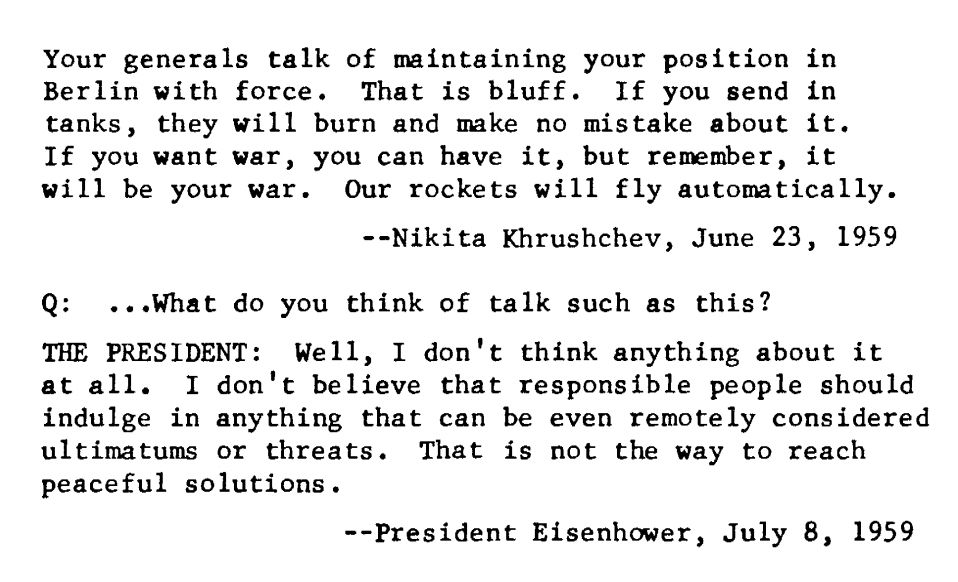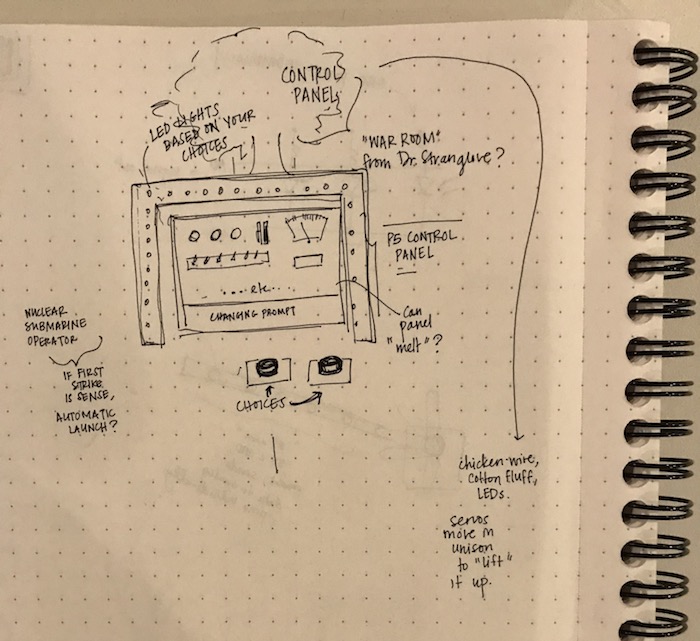For my midterm, I wanted to do something that was a bit more rooted in research than my other assignments for class. Given that the theme of this particular project is "Halloween," I imagined the scariest possibility I could think of: a nuclear war.
I had read Daniel Ellsberg (leaker of the Pentagon Papers!)'s The Doomsday Machine earlier this year, and one of the points that the book stressed was the increased likelihood of an "accidental" nuclear strike due to vulnerabilities in both present nuclear deterrence strategies and the so-called "rigging" of our own doomsday machine. His book focuses particularly on "first-use" or "first-strike" U.S. response strategy, and the circumstances in which such a response could be triggered. He's published a few documents from his time at the RAND corpotation here: http://www.ellsberg.net/doomsday-documents/. An excerpt from a lecture series document he shared entitled "The Theory and Practice of Blackmail" has the following interesting tidbit:

I think this basically sets the mood of the piece I'm building. It will be a mini-game in which the captain of a nuclear submarine has suddenly lost communication with the chain of command, but detects suspicious activity on their onboard sensors. The game will escalate to the trigger of the doomsday machine. I haven't quite decided if I want the game set in an imagined 1960s nuclear submarine or present day.
I'm going to build an interface of instrument readings, dials and switches in P5, with physical buttons for major choices in the game (limited to 2-3 buttons/major choices). The aesthetic should be that of a nuclear submarine (as though you are staring at an instrument panels on a nuclear sub). The physical buttons will update text and change the displayed instrument readings on the P5 sketch. The "instrument panel" setup would be rimmed with LEDs that would flash red once the doomsday machine had been triggered.
If there's time, I thought I could build a small mushroom cloud that would "rise" from behind the instrument panel (a device constructed of two servo motors, chicken wire, polyester fill, and LEDs...), but that would be secondary to the instrument panel setup. Here's a very rough sketch of what I had imagined:

I've been looking through this site for interface inspiration: http://control--panel.com/, and identified the following items as key references:



I've started making some of the instrument panel on P5 and hope to have the P5 portion completed and materials for the physical computing components purchased by the end of the weekend.
